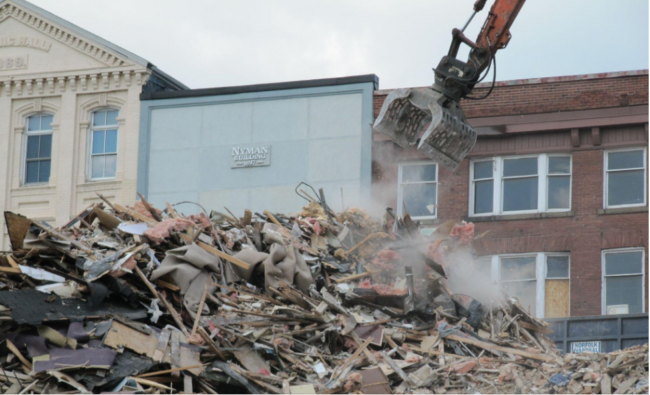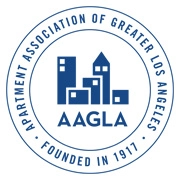Earthquake Preparedness: How to Secure Your LA Rental Property

Los Angeles, a vibrant city known for its dynamic culture and booming industries, is also a region prone to seismic activity. Earthquake preparedness is not just a recommendation; it’s a necessity, especially for rental property owners. In this comprehensive guide, we’ll explore effective strategies to secure your LA rental property against earthquakes, ensuring the safety of your tenants and the longevity of your investment.
Understanding Seismic Risks in Los Angeles
Los Angeles sits on a complex network of fault lines, making it susceptible to earthquakes. As a property owner, it’s crucial to understand the seismic risks associated with your property’s location. Regularly review geological surveys and seismic activity reports to stay informed about potential threats.
Structural Assessment and Reinforcement
The first step in earthquake preparedness is assessing the structural integrity of your property. Hire a professional engineer to conduct a thorough evaluation, focusing on the foundation, load-bearing walls, and overall construction quality. Based on this assessment, undertake necessary reinforcements, such as:
- Retrofitting: Strengthen the structure by anchoring walls to the foundation and reinforcing weak points.
- Foundation Bolting: Secure the property to its foundation to prevent displacement during seismic activity.
- Cripple Wall Bracing: Reinforce the wooden walls in the crawl space under your property to enhance stability.
Tenant Safety and Emergency Preparedness
Educating your tenants about earthquake safety is as important as fortifying the building. Provide them with clear instructions on what to do during and after an earthquake. This includes:
- Creating an evacuation plan and marking safe exits.
- Educating tenants on the “Drop, Cover, and Hold On” technique.
- Providing information on emergency contact numbers and local relief centers.
Regular Maintenance and Inspections
Regular maintenance is key to ensuring that your property remains safe and earthquake-ready. Conduct periodic inspections to identify and address potential hazards, such as:
- Checking for cracks in walls and foundations.
- Ensuring gas lines, water heaters, and appliances are securely fastened.
- Inspecting and maintaining electrical and plumbing systems to prevent fire hazards and leaks.
Investing in Earthquake Insurance
While standard property insurance policies don’t typically cover earthquake damage, investing in earthquake insurance can provide financial protection. This insurance can cover repair costs, loss of rental income, and even temporary relocation expenses for tenants.
Emergency Supplies and Resources
Maintain a stock of emergency supplies on the property, including:
- First aid kits, flashlights, and batteries.
- Portable radios for receiving emergency broadcasts.
- Water and non-perishable food supplies.
Communication Plan
Establish a clear communication plan to stay in touch with tenants during emergencies. This includes:
- Providing tenants with contact information for property management.
- Setting up a system for regular updates and instructions post-earthquake.
- Utilizing social media or messaging apps for quick communication.
Community Involvement
Engage with local community programs and workshops on earthquake preparedness. Encourage tenants to participate in these programs to build a resilient community.
Upgrading to Earthquake-Resistant Materials
In addition to structural reinforcements, consider upgrading your property with materials designed to withstand seismic activity. This can include:
- Flexible piping systems for gas and water to prevent leaks and breaks.
- Shatter-resistant window films to reduce the risk of glass breakage.
- Seismic isolation systems for new constructions or major renovations, which allow the building to move independently of ground motion.
Implementing Smart Technology for Early Warning
Advancements in technology have led to the development of earthquake early warning systems. Investing in smart technology that integrates with these systems can provide crucial seconds to minutes of warning before the shaking starts. This can include:
- Automated systems to shut off gas and electricity to prevent fires.
- Alerts through building intercom systems to inform tenants of impending shaking.
- Integration with tenant smartphones for direct alerts and instructions.
Retrofitting Older Properties
Older properties often require more attention when it comes to earthquake preparedness. If your rental property is historic or was built before modern seismic standards, it’s essential to:
- Consult with specialists in historic building preservation and seismic retrofitting.
- Prioritize upgrades that maintain the building’s character while enhancing safety.
- Seek advice on compliance with local historic preservation guidelines during retrofitting.
Landscaping and Exterior Safety
The area surrounding your property can also pose risks during an earthquake. Ensure:
- Trees and large shrubs are well-maintained to prevent them from becoming hazards.
- Outdoor furniture and decorations are secured or easily movable.
- Walkways and driveways are well-maintained to prevent tripping hazards during evacuations.
Tenant Training and Drills
Regular training and drills can significantly improve tenant safety during an earthquake. Organize:
- Earthquake drill sessions to practice evacuation and safety procedures.
- Workshops with local emergency services to educate tenants on earthquake response.
- Sessions on basic first aid and emergency response techniques.
Backup Power Solutions
Power outages are common after major earthquakes. Consider installing:
- Backup generators to keep essential systems running.
- Solar-powered lighting and charging stations for tenant use.
- Battery backups for critical systems like security and communication.
Financial Planning for Earthquake Repairs
Earthquake damage can be costly to repair. It’s important to:
- Set aside a contingency fund specifically for post-earthquake repairs and renovations.
- Understand the terms and coverage of your earthquake insurance thoroughly.
- Plan for potential loss of rental income during repair and reconstruction phases.
Building a Support Network
Establish relationships with local contractors, engineers, and emergency services. This network can be invaluable for:
- Quick response and assistance in assessing and repairing damage post-earthquake.
- Providing expert advice on ongoing maintenance and upgrades for earthquake safety.
- Offering support and resources to tenants in the aftermath of an earthquake.
Conclusion
Earthquake preparedness is a multifaceted approach that requires ongoing attention and investment. By taking comprehensive steps to secure your property and educate your tenants, you can mitigate the risks associated with seismic activity in Los Angeles. Remember, the safety of your tenants and the integrity of your property are paramount.
Call to Action
Don’t wait for the next big quake to start preparing. Contact Los Angeles Property Management Group today at (323) 255-9400. Our experienced team is ready to assist you with every aspect of earthquake preparedness for your rental property. From structural assessments to tenant education, we’re here to ensure your property is safe, secure, and ready for whatever comes its way. Let’s build a safer future together.








